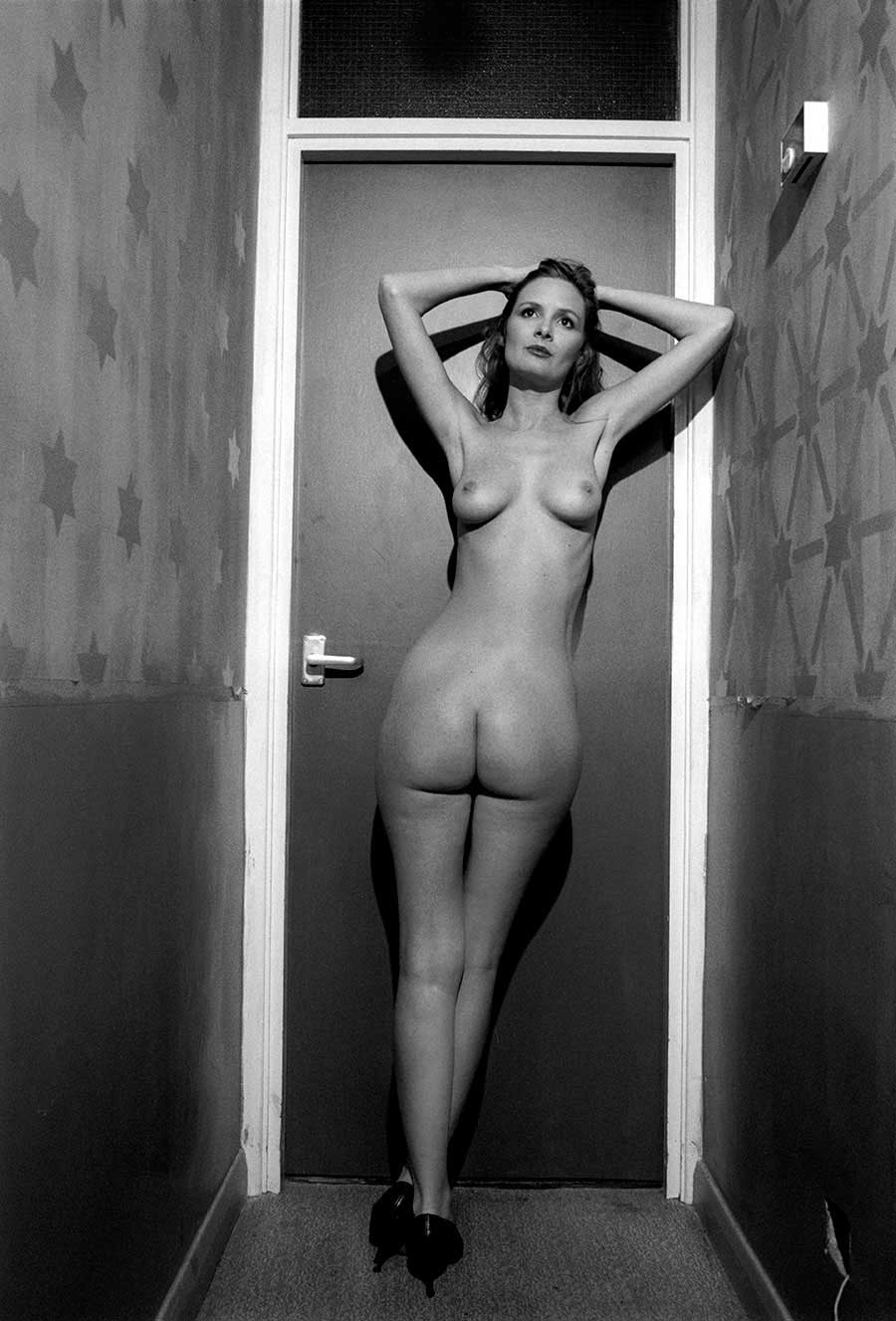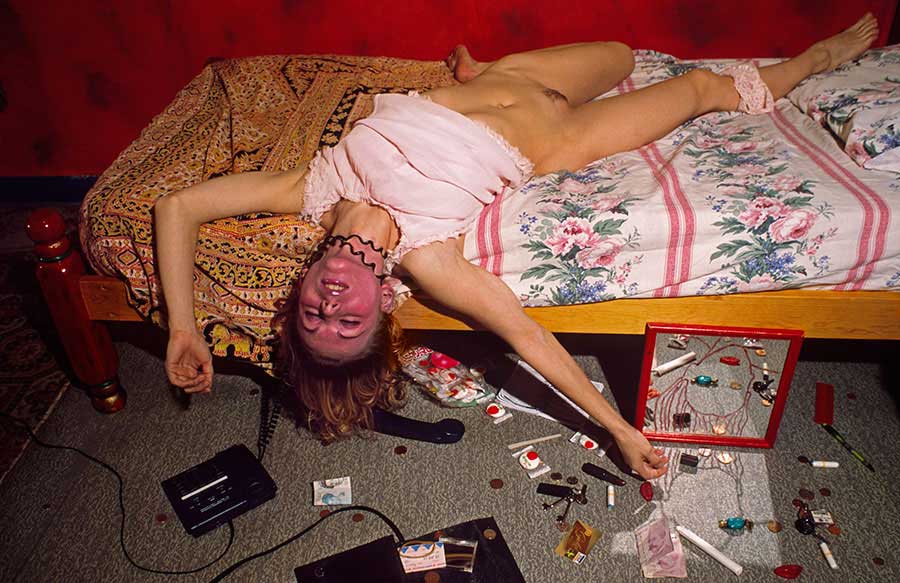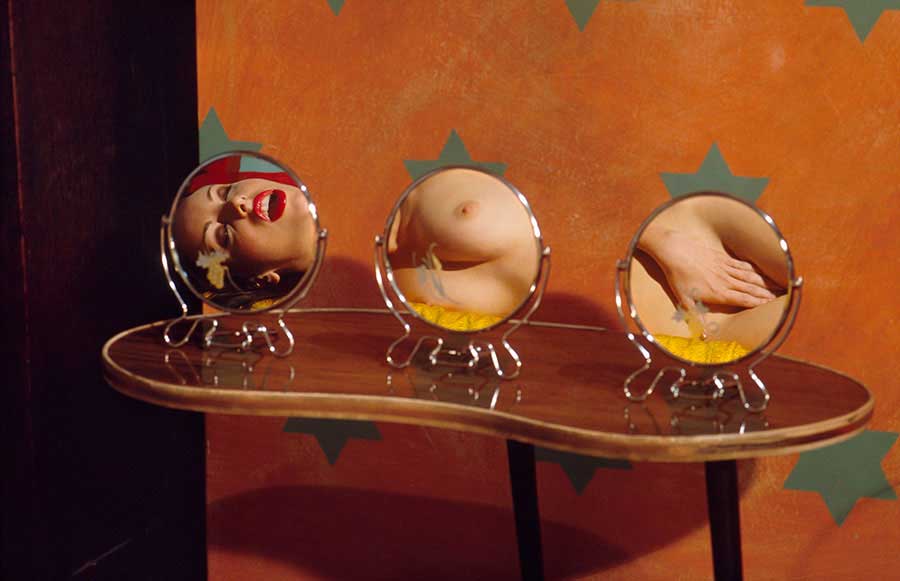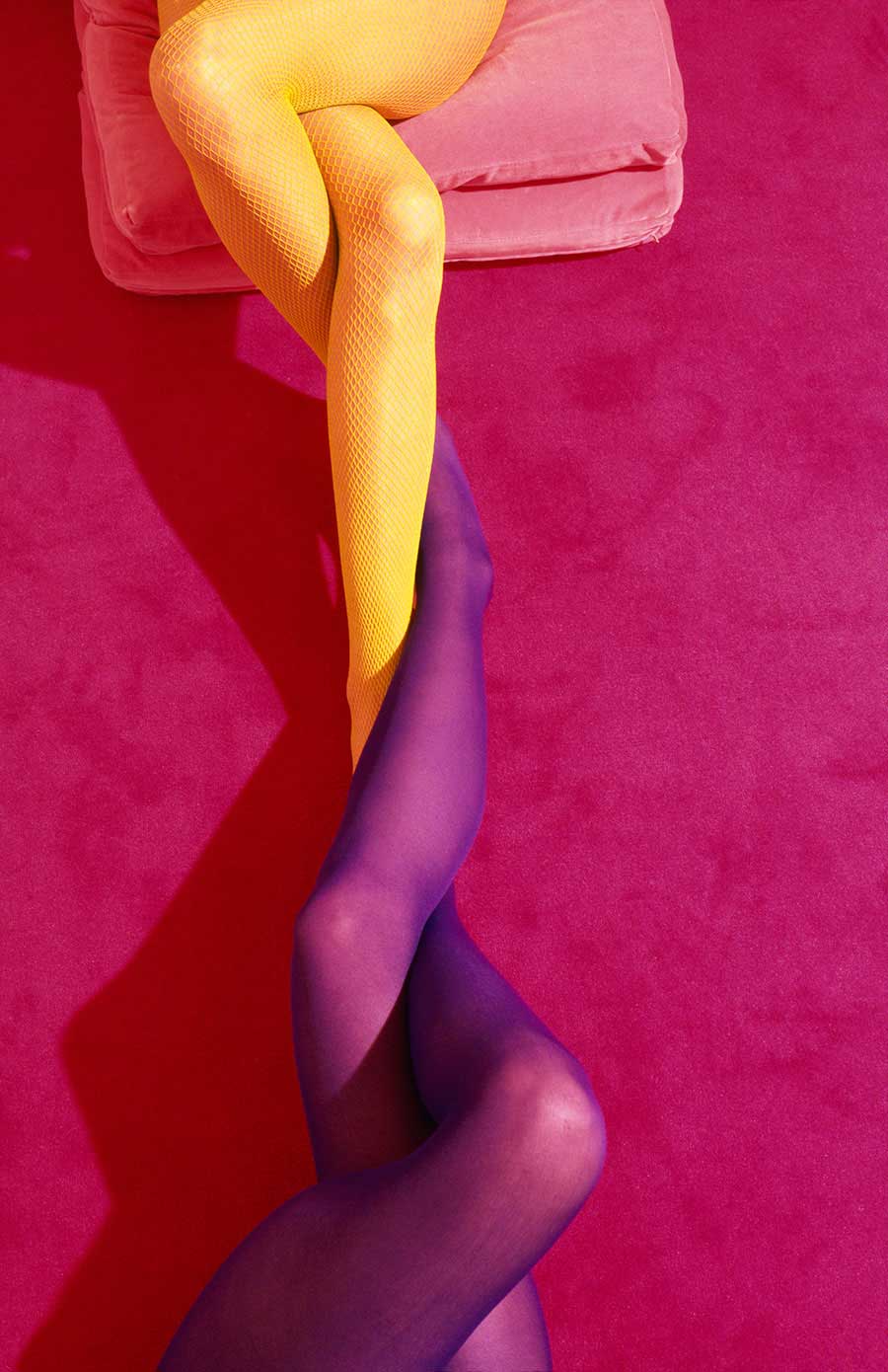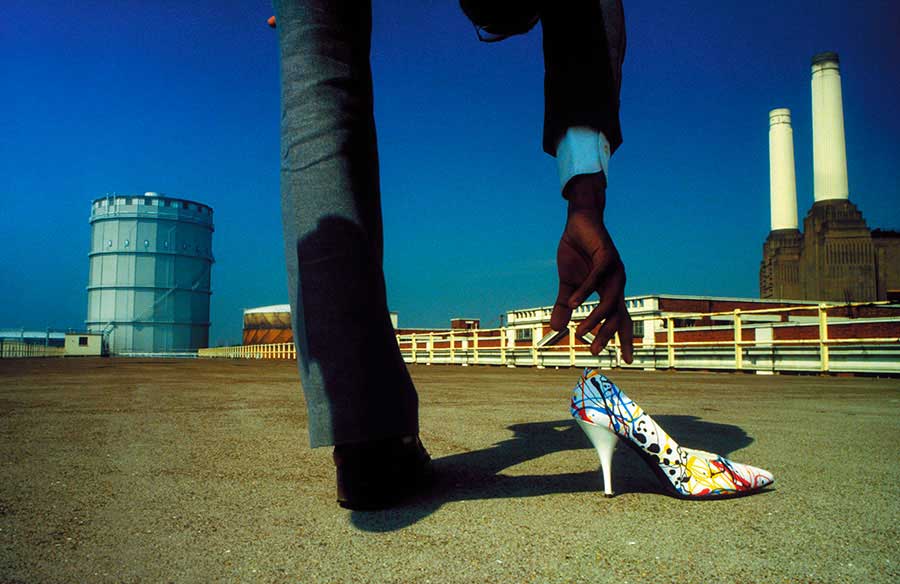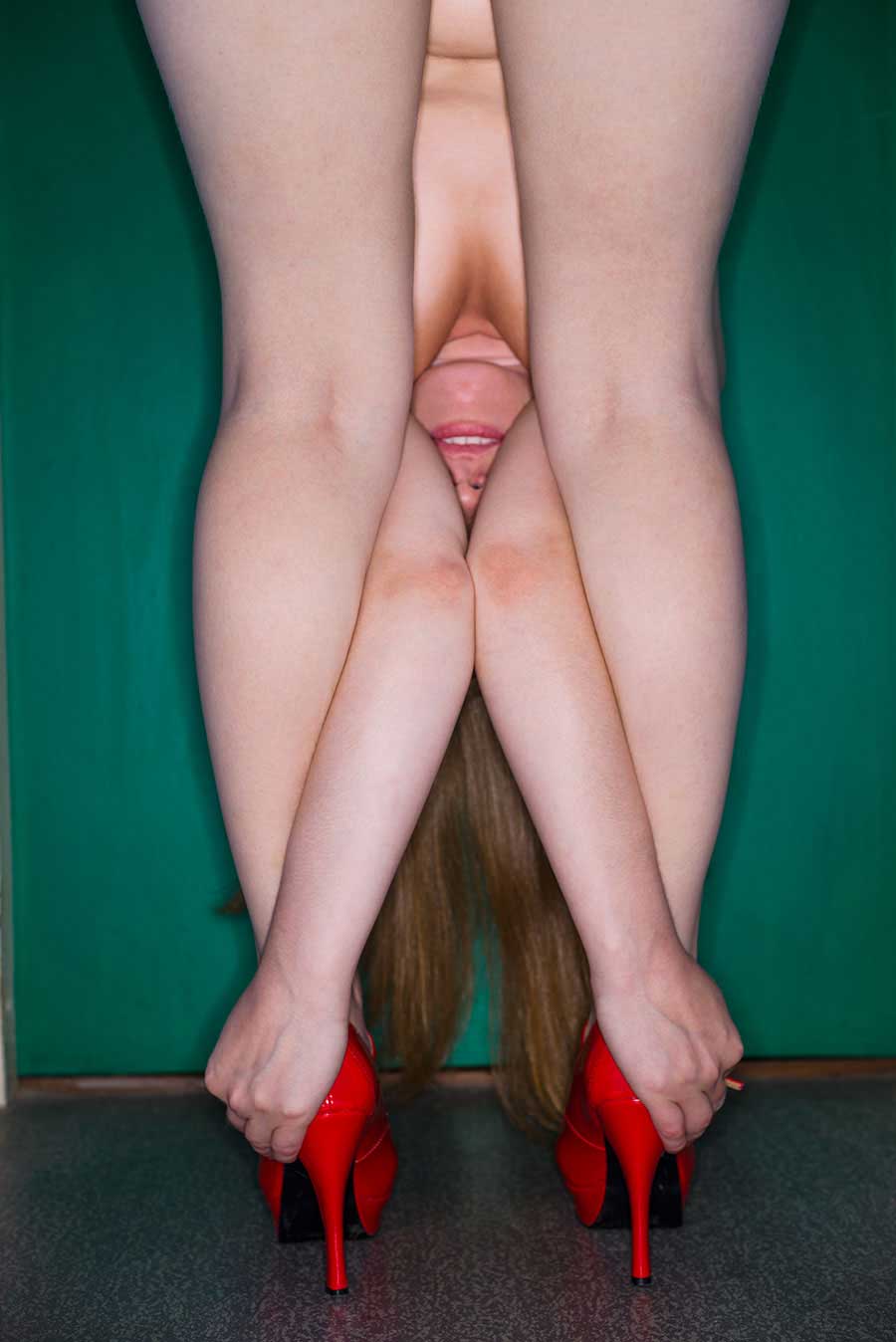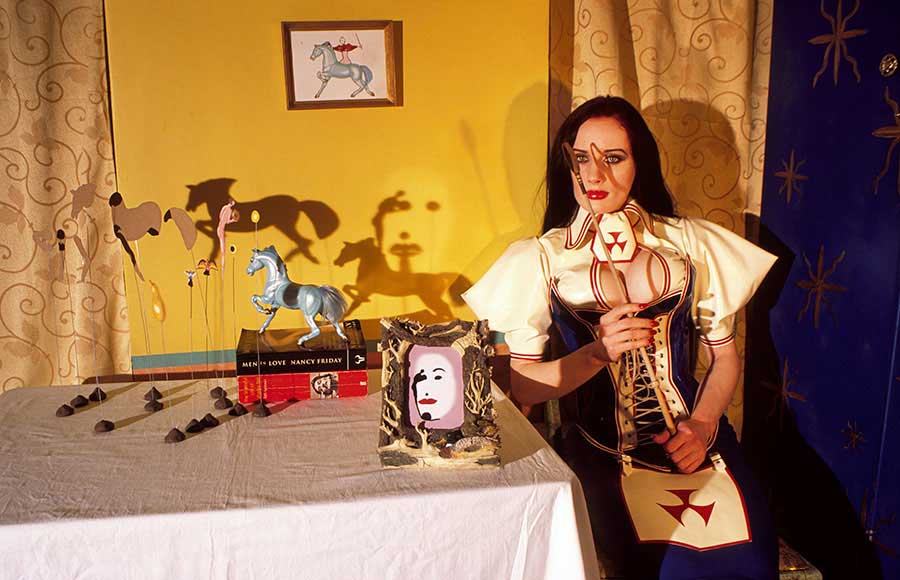“I was born and while I am waiting to die, to kill time, I take photographs.”
-Alva Bernadine-
Can you tell us a little about yourself?
My photographs start with a strong central “event” then comes location and colour. They contain surrealism, the unusual and the quirky. I use eroticism and frequently narrative elements to that lead the viewer to conjecture what may have happened before or after the frame was taken. Some images are like stills from films that have never been made. They are about not only desire but the problems that go with it.
I am largely self-taught and after a slow start I began working for magazines, won the Vogue Sotheby’s Cecil Beaton Award for young photographers with my series of shoe pictures, entitled, The Fetish. In 2001 I had a book of my work published, Bernadinism: How to Dominate Men and Subjugate Women, for which I won Erotic Photographer of the Year in Britain. Since then I have leaned more towards erotic photography.
How did you get interested in photography?
When I was about ten I bought a plastic camera from a toyshop. I also bought a pamphlet on photography that talked about not only rule of thirds but aperture and depth of field. I only had weather symbols. It took me another five or six years to get an SLR.
I do not remember how it came about but my class teacher offered me a Praktica camera for free, only the iris of the lens was broken. To mend it I sold my Instamatic to my mother and earned the rest from my paper round. I then went back to the pamphlet and read about aperture and depth of field again. I did an O level in photography for a year then hardly touched it again for the next 5 years.
Who are some of your favorite classic photographers, and how did they influence you?
The first influence in my present style was the surrealism of Rene Magritte. Next came a German by the name of Cheyco Leidmann. I came across his book, Foxy Lady, in which the models were dressed in brightly coloured Lycra in American deserts, but there was something surreal or unusual happening in every picture, like a thrown cat or a stuffed giraffe on Astroturf. In another book, Ad Art, he detailed the film, lens and joules of the flash used. He seemed to use 18mm a lot which was much too wide for my environments and I found 28mm suited me better. To this day my normal lens is a 28mm. 50mm is like a telephoto to me. It was looking at these pictures that I learned to light.
I then came across 4 pictures in a publicity annual by Guy Bourdin for Charles Jourdan Shoes, and two others in the same style by another photographer. I could see the limitations of Leidmann. You could not describe life with girls in Lycra but in Bourdin’s way you could.
I started sketching out ideas and looking for locations and when I finally went out to take my first pictures it was these three people that were in my head. I thought of an idea of a man on one leg, bending over to pick up an object. I did not know what the object should be until I saw a Pollack patterned shoe in Fiorucci, whose clothes I began to borrow. Bourdin came to my mind and I decided this was the object I needed. I executed the picture on my first surrealist roll of film and it along with two other ideas on the same roll established my style straight away. The pictures kept coming and by the autumn I had 15-20 images for my first portfolio.
The following year I happened upon Bourdin in the pages of Paris Vogue and followed
him for the next two years until he left them and disappeared from my view. There were no books of his work and he had no exhibitions so he thoroughly disappeared. I had missed his heyday of the 60s and 70s.
The first time I went on the internet in 1998 I searched for him. All there was 3-5 small jpgs. Three years later I looked again and there was still no more. It was then I decided to create the first Guy Bourdin website so he would not be forgotten, even though it seemed that he wanted to be. That was in the spring of 2001. In October, a month after my first book was published, Exhibit A came out, and he is more famous now than when he was alive. http://www.guybourdin.net
What first drew you to photography and how did you discover it?
What drew me back to photography was seeing an ad in the local newspaper for photographers. It turned out to be knocking on doors and getting parents to have their babies photographed. I was no good at that and hated it but it reawakened my interest in photography.
I began looking at as many books and photography magazines I could lay my hands on for tips on technique then soon I began looking at consumer magazines and advertisements and thought I could do that if I had the right sort of lighting.
When I became interested in photography again at the age of 21 I began looking at amateur magazines and learning the names of the great photographers. In a short space of time, it became clear to me, that on the balance of probability, I could not compete with the likes of Cartier Bresson, Bill Brandt or Robert Doisneau, especially as hundreds of thousands had gone that way before me. I needed to go down a less rutted path, a direction I could walk with some springy grass beneath my feet.
My first influence was a Spaniard named Francisco Hidalgo. He would publish books on major capital cities and part of his style included all sorts of Cokin filters. Every week when I got paid from my job I would order another filter I had seen in the Cokin catalogue and go around the London tourist spots using multiple filters and double exposure to create what I called impressionism.
Later that summer I began to experiment with manipulating the emulsion of the film, which created bubbles, distortion and colour shifts all at the same time. It is those pictures that have lasted from that period. Thereafter, I used that technique mostly for my holiday pictures for the next 20 years. I made a video about it. http://www.bernadinism.com/neo-pictorialism
How do you educate to take better photos?
After learning the rudiments of photography, my next phase was to look at as much photography as I could. That way I learned what I liked and what I did not. It helped store up techniques of how to frame situations when I encountered them.
I learned to light by observing the quality of shadows thrown by the lights. If you look at the reflections in the eyes of a fashion or portrait photograph, you can see whether an umbrella or a rectangular diffuser or reflectors has been used.
Photography is something I have never been afraid of. I generally only use one light but if I suddenly found I had to use a dozen, it would not faze me.
How do you come up with ideas for your projects?
Most of my inspiration comes from other photographs. I have folders going back to the beginning of my photography and now I have digital files. I save them because I like an element in them. It could be a gesture, a colour combination or interesting event in them. When I need an idea for a shoot I start by going back to these. Sometimes I will combine elements from different images to create a new picture.
I am also inspired by film and television, art and even radio, also stuff I observe on the street. The public libraries have been the source for inspiration. Looking through the craft section, I have found books on frame making, wire jewellery and all sorts of hobbies that have led me to ideas. All these things are filtered through my own aesthetic sensibility to create something in my style.
I have been asked where I get my ideas so many times that I made an explanatory video. https://vimeo.com/31676925
Do you take photos more for yourself or for others?
I have mostly photographed for myself. If you are commissioned then you have to be cognoscente of the style of the magazine and the limits of how far you can push. Photographing for myself means there are no boundaries and I can go as far as my imagination and resources will allow me. That is the sort of photography I most enjoy and it is where I produce my best work.
What do you think makes a memorable photograph?
There are many elements that create a memorable photograph but in terms of my work, it all starts with a surreal or unusual event or quirky idea. I then have to find a location for it, though sometimes a location can inspire an idea. I have always liked saturated colour as well. I only know a picture works when I see it on my desktop. The longer I stare at it means the more I like it and the closer it is to what I desire in an Alva Bernadine picture. Getting one good picture in an average shoot is good enough for me. After 30 years I have many good or great shots and any new picture has to find its level in that hierarchy. It is not like when I was just starting out and any decent image found its way into my portfolio.
How important is an awesome website for your business?
I am the wrong one to ask about websites and business. Up until a few months ago I had an awesome website. It was so awesome that it was a work of art in itself and it was fairly impractical navigating through it easily. I found a cache of creative commons javascript animations and repurposed them for the site. You had to push animations out of the way to get to the navigation. Images could turn to confetti when you rolled over them. I had two weightless figures floating about in an apartment I rented on assignment in the Czech Republic many years ago. You could bash them about with my Perspex portfolio case, that you could also use to click on the menu. You could click and pull on pictures to make them wobble. Every project had a different theme. As I said it was a work of art and was a turn-off if you just wanted to see some pictures quickly. It should be in a gallery rather than on the internet. I did not care though, and I kept it four years. Now my new one is like everybody else’s.
How has social media played a role in your photography?
I have been on Facebook since 2009 and I have posted on my fanpage three times per week until the beginning of last year when I started posting 6 or 7 days per week. After I ran out of clothed pictures I had to start putting censor patches on my nudes so I would have something to post, thanks to Facebook’s policies on nudity. In a year my followers have doubled to 5,000.
In November of last year I had a two month solo show in a Paris gallery and was represented at Fotofever art fair and appeared on French and German TV. This came about through a gallerist contacting me through Facebook.
I find useful to run pictures past my audience to see which are the most popular. This influences what I might exhibit or offer for sale. The only trouble with that is I get more likes for nudity and if you keep playing the populist card you can lose your way as an artist. My next plan is to join Instagram.
What are some tips you would give to yourself if you started photography all over again?
My tip would be never show an art director or a gallery all your work because they always want to know about the new thing you have just done or what you are working on. If you have not been inspired lately or have been too busy to create new stuff, you will then be able to pull out something to pass off as new. With my first book I was anxious to please and I showed too much work. As a result there are pictures in it that displaced pictures I wanted published.
If you only have 15 pictures to show then only show 10. That means you are already halfway to a new folio. When you have shot some more you then have an excuse to see them again and thereby build up a relationship.
What is one question nobody has ever asked you that you wish they asked you?
I have been interviewed many times over the years and have been asked all manner of questions. Answered the ones I wanted to answer and avoided the ones I did not. To me the only question worth asking is the one I continually ask myself before every shoot, and that is, “How do I take and interesting picture?” Maybe tomorrow I can find yet another answer? [Official Website]



